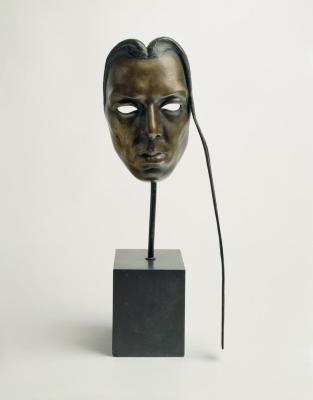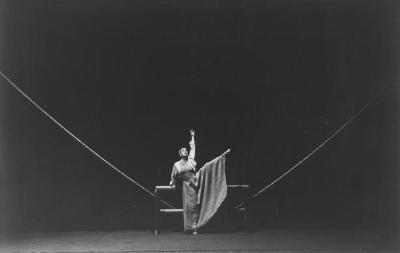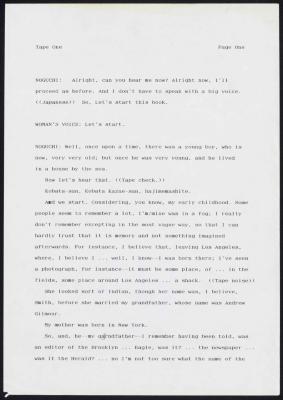Isamu Noguchi interviewed by Kazue Kobata. Part 4 of 13.
August 24 1986
Identifier
AV_CTE_004C_1986_02
Duration
35m 30.0s
Description
Noguchi discusses the creation and design of Akari - Gifu - changes in the nature of Japanese material culture from traditional to modern sensibility. Discussion of Susan Sontag and Japan’s postmodernism. Urban landscapes’ effect on people. The Bōsōzoku subculture of youth bike gangs in Japan. Noguchi’s work on gardens and theater sets. Martha Graham - Michio Ito - bronze head of Michio Ito, 1926 (CR16) - first theater work were masks for At the Hawk’s Well, W.B. Yeats, 1925 - Guggenheim grant, 1927. Noguchi’s agnosticism. Theater set for Frontier, Martha Graham (CR139). Interest in Japanese ancient art - haniwa. Noguchi’s 1931 trip to Japan - staying with uncle Takagi in Nihonbashi - studio in Kodenma-cho - trip to Peking - Peking Brush Drawings - Yone Noguchi introduces Noguchi to Jiro Harada - imitation in Japanese art - Jinmatsu Uno - Kitaoji Rosanjin in Kamakura - Forceful personalities of people like Rosanjin and Alfred Stieglitz. Stieglitz’ role in recommending Noguchi for Guggenheim grant, Stieglitz relationship with Georgia O’Keefe, promotion of American modern artists such as Arthur Dove and John Marin. Buckminster Fuller’s Operation Manual for Spaceship Earth and Synergetics: Explorations in the Geometry of Thinking. Noguchi’s first meeting with Fuller at Romany Marie’s cafe in Greenwich Village. Buckminster Fuller bust in 1929 (CR59). Dr. Edward A. Rumely’s contribution to science - introduction of Vitamin D to America. Noguchi’s schooling at Interlaken. World War I and art in the war period - Ezra Pound - Constantin Brancusi. Léonie Gilmour’s impact on Noguchi - death in 1933 - feminism. Noguchi and Kobata tour the garden - discussion of Masatoshi Izumi - Noguchi’s house in Mure.
Creator
Collection


